Underwater portraiture is a beautiful medium with many factors to consider that can’t be addressed within a single post. So, we’ll start off here by focusing on one aspect: directing the light. Just like above water, the direction and quality of the light dramatically change the look of the portrait.
Choosing a lighting source for underwater photography
Underwater strobes and lights get expensive and require special camera housings to truly be effective. I’ve seen ingenious ways to get strobes fired from above the pool to be reflected down into the pool. These can be a novel, but difficult solution without equipment specially designed for it. However, a simpler solution is to use the power of the sun to our advantage in lighting our underwater portraits.
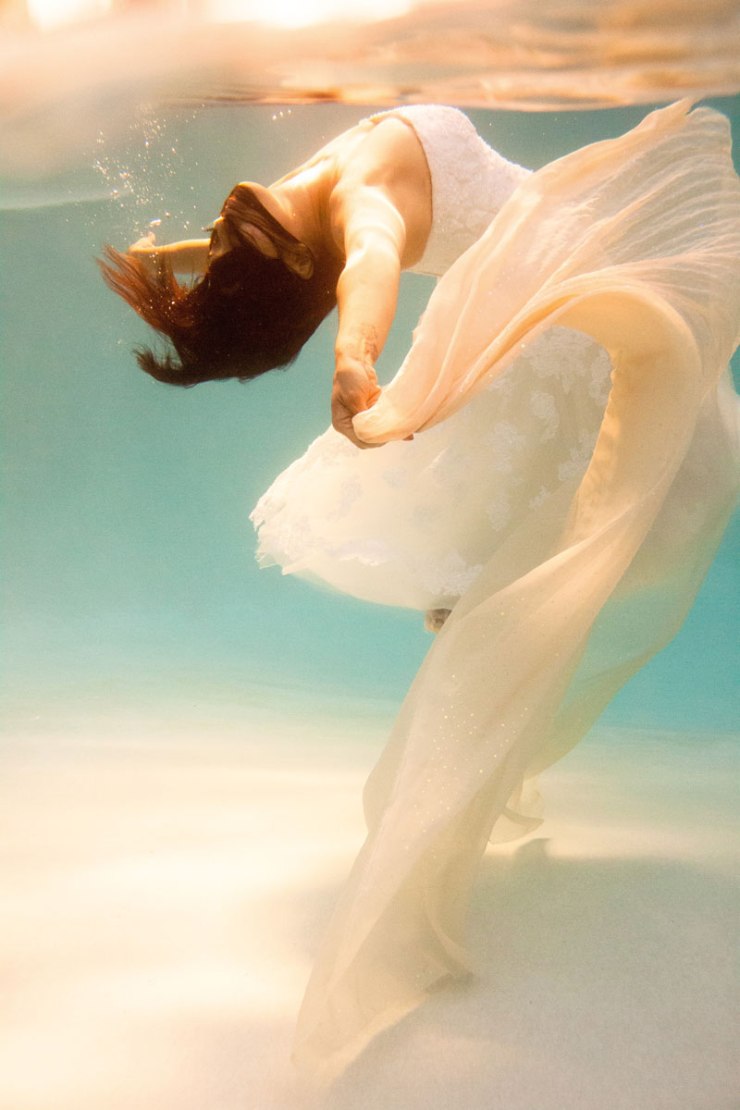
When to photograph underwater
As photographers, we often crave the Golden Hours of sunrise and sunset, for good reason. The light is soft, and the low long shadows and softer warm light can be used to great effect. This happens to translate into the underwater environment as well. It is the easiest time of day to work as it provides the most control over the lighting.
For underwater photography, we can use this to our advantage in a way that is unique. This is due to how the light bounces when it hits the water’s surface. I want to control the light for a portrait even when shooting underwater. I don’t like having the sun hitting the surface of the water directly, causing refractive patterns that scatter the light. This happens when the sun is shining directly on the surface of the water and is disturbed through waves, splashes, or even slowly moving around in the pool.
.mgl-tiles { display: none; } #mgl-gallery-634ec3182fbbb { margin: -5px; width: calc(100% + 10px); } #mgl-gallery-634ec3182fbbb .mgl-box { padding: 5px; } @media screen and (max-width: 768px) { #mgl-gallery-634ec3182fbbb { margin: -5px; width: calc(100% + 10px); } #mgl-gallery-634ec3182fbbb .mgl-box { padding: 5px; } } @media screen and (max-width: 460px) { #mgl-gallery-634ec3182fbbb { margin: -5px; width: calc(100% + 10px); } #mgl-gallery-634ec3182fbbb .mgl-box { padding: 5px; } }
Soft light from pool in the shade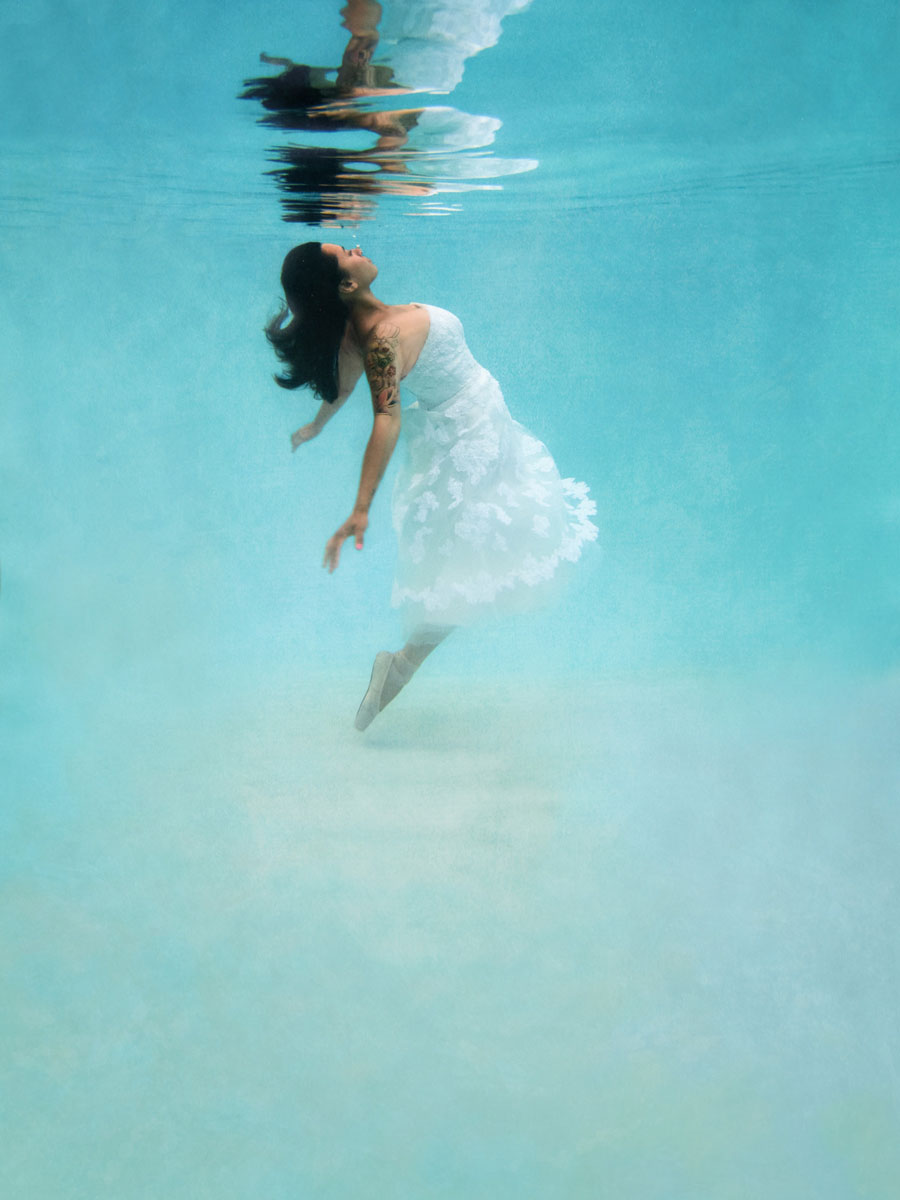
Beautiful image with direct light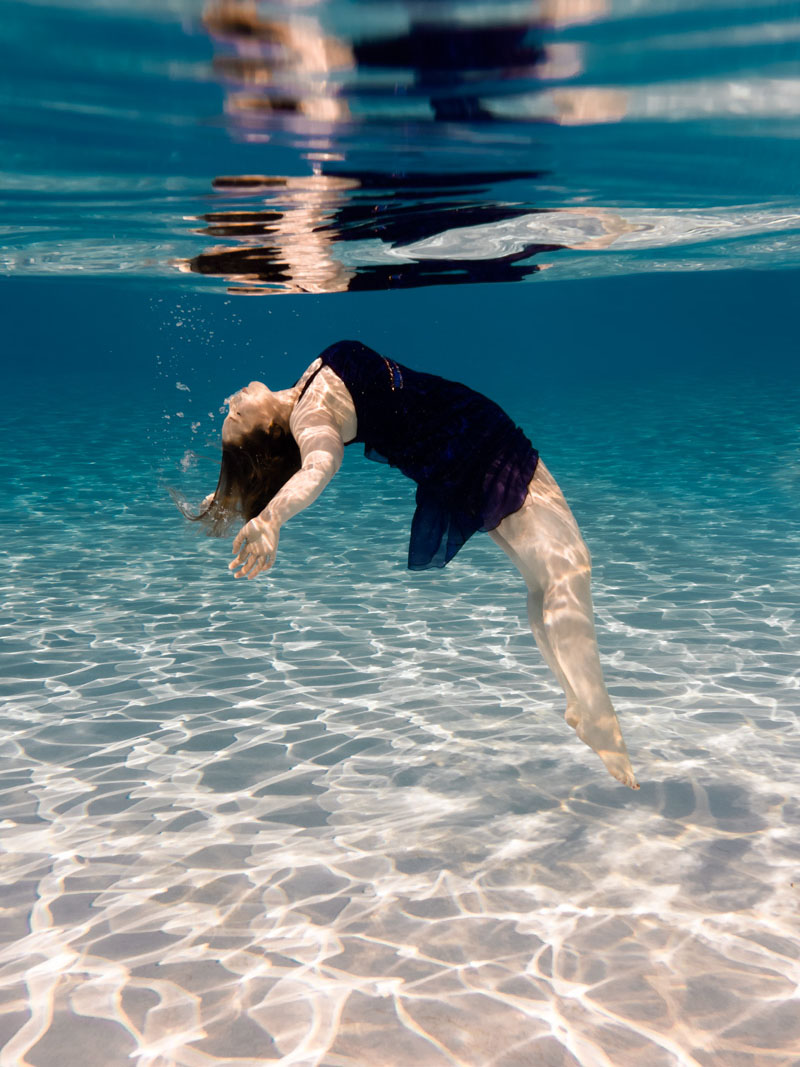
The light can hit the skin in unflattering ways that are difficult to control, even if the result is as beautiful as the image on the right shows. So, for the left image of the bride we waited until the sun was low enough on the horizon that the pool was fully in the shade. I wanted that soft light. I really can get a fantastic image with just the soft light from the shaded pool. It creates a dreamy look, almost ethereal.
Directing the light
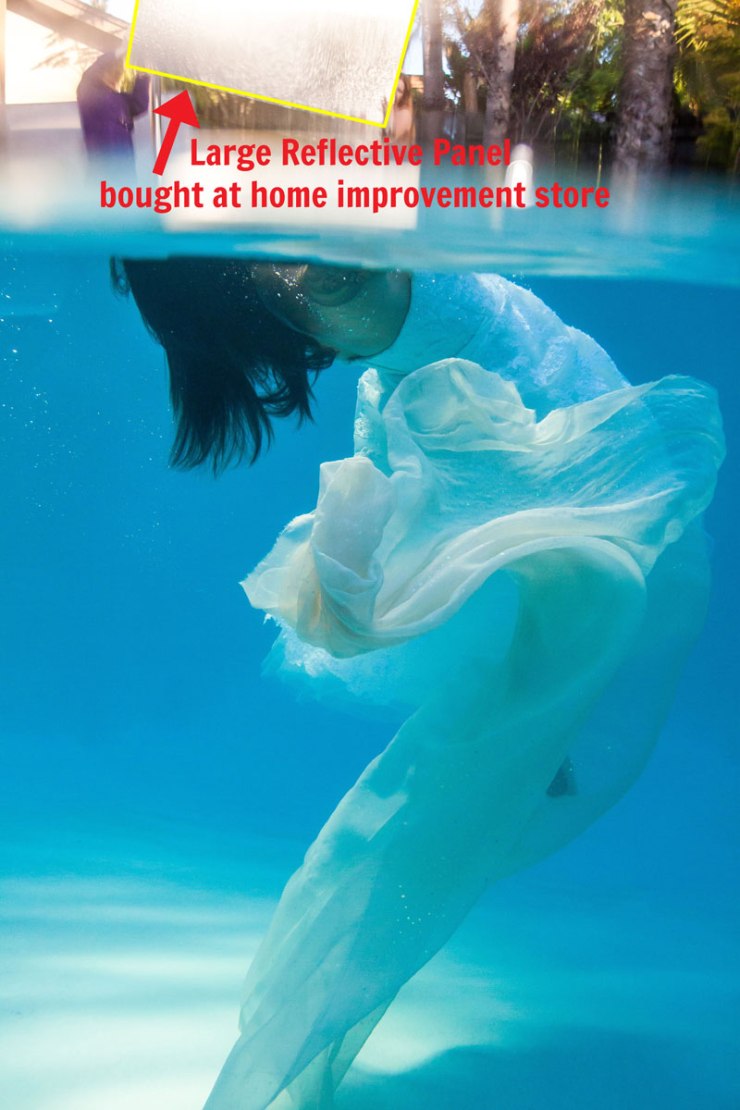
To add dimension, and depth that comes from a more directed light, I would need to add light to the underwater environment. In this case, it comes from a giant reflector (4 feet by 8 feet). My assistants and I are directing the sun on her creating a spotlight of bounced light. Normally, if we are going through a photography catalog, a reflector that size would be prohibitively expensive.
Bargain priced equipment
However, home improvement stores often have “photography” equipment for a bargain-basement price. A piece of foam insulation paneling with a silver reflective surface in a variety of thicknesses is less than $15. It’s big, it’s bulky, but it is light and disposable (or can be saved for your next project). You can’t do this alone. It isn’t a solo endeavor, but with two assistants on the side of the pool, holding the reflector we have a movable spotlight to direct on the subject, controlling the light.
Assistants
These assistants are really “voice-activated light stands” and will have to move and shift the reflector depending on where I want the light to fall. However, it is worth the effort because the silver panel creates a beautiful warmth and glow that is hard to match.
Thank you, Carrie Mundy and Brett Lind for all of your underwater support, encouragement, and advice. Underwater photography really is a team effort.
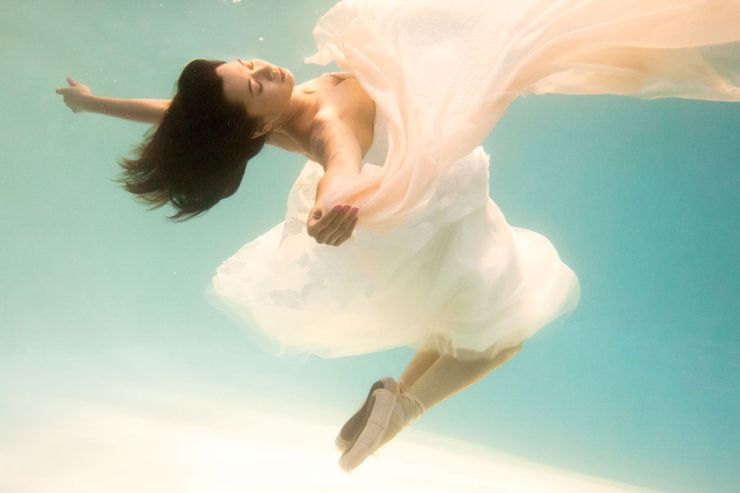
So, my advice, if you want to kick your underwater images up a notch, use this golden hour to your advantage. Once the pool is in shade, but the sun has not completely set, reflect the light that is available during that golden hour. It is a fun and simple solution that will take your underwater images to the next level.
Tell your story with the second annual Visual Storytelling Conference!
Experience four days of interactive, online training sessions featuring a range of educational content with experienced photographers and content creators. This free event kicks off with a series of technical boot camps to build essential skills, followed by live, online sessions on photography, video, business and social media. Join live from March 10-13, 2022!
